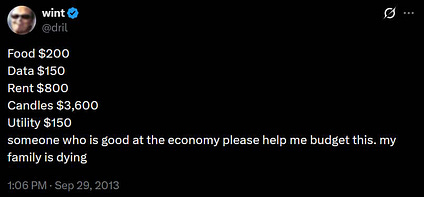The Treatment of Children in Foster Care Within the United States – NAACP

Report on Racial Disparities in Child Welfare Systems and Alignment with Sustainable Development Goals
Introduction: Addressing Systemic Failures Through the SDG Framework
An analysis of the United States’ child welfare and foster care systems reveals significant racial disparities that directly contravene the principles of the Sustainable Development Goals (SDGs), particularly SDG 10 (Reduced Inequalities). The over-representation of children of color, especially Black children, points to systemic issues, including implicit bias, that undermine the goal of ensuring equal opportunity and ending discriminatory practices. This report outlines these challenges and proposes resolutions aligned with achieving sustainable and equitable outcomes for all children.
Analysis of Systemic Inequalities and Health Impacts
Disproportionate Representation and SDG 10: Reduced Inequalities
The foster care system demonstrates a clear failure to meet the targets of SDG 10. Data indicates a persistent pattern of racial disproportionality where the representation of minority children in foster care far exceeds their proportion in the general population.
- In 2021, Black children constituted 14% of the total child population but represented 20% of children entering the foster care system.
- Similarly, American Indian and Alaska Native children, while only 1% of the child population, accounted for 2% of those entering foster care.
These statistics highlight institutional biases that lead to a disproportionate number of families of color being investigated and separated, directly challenging the SDG 10 objective to reduce inequality within and among countries.
Child Maltreatment and its Conflict with SDG 3 and SDG 16
The elevated risk of maltreatment for children of color within the foster care system represents a severe violation of fundamental human rights and a significant barrier to achieving SDG 3 (Good Health and Well-being) and SDG 16 (Peace, Justice and Strong Institutions). Target 16.2 explicitly calls for an end to abuse, exploitation, and all forms of violence against children.
The long-term consequences of such abuse create lifelong challenges to well-being, undermining SDG 3. These impacts include:
- Mental Health Disorders: Increased prevalence of post-traumatic stress disorder (PTSD), anxiety, depression, attention deficit hyperactivity disorder (ADHD), and other mood disorders.
- Impaired Neurological Development: Disruption of critical brain development, negatively affecting cognitive function and emotional regulation.
Allowing children to suffer these traumas within a state-run system is an injustice that necessitates institutional reform in line with SDG 16.
Strategic Resolutions for Building Strong and Equitable Institutions (SDG 16)
To address these systemic failures and align the child welfare system with the Sustainable Development Goals, a series of strategic actions are required. These resolutions focus on strengthening institutions (SDG 16) to ensure they are just, inclusive, and protective of all children.
- Enhance Institutional Accountability: Advocate for strengthened oversight of state foster care systems and increase funding for child welfare programs. This directly supports SDG 16.6, which aims to develop effective, accountable, and transparent institutions at all levels.
- Invest in Human Resources: Implement initiatives to reduce caseworker turnover and provide enhanced training and resources for foster parents. This builds a more stable and skilled support system, contributing to the protection of children (SDG 16.2) and the promotion of their well-being (SDG 3).
- Promote Inclusive and Representative Participation: Partner with local child advocacy organizations to actively recruit board members, staff, and volunteers of color. This action is critical for achieving SDG 16.7 (ensure responsive, inclusive, participatory and representative decision-making) and SDG 10, by ensuring that families of color are supported and represented by individuals who understand their unique cultural contexts.
Analysis of Sustainable Development Goals in the Article
1. Which SDGs are addressed or connected to the issues highlighted in the article?
- SDG 3: Good Health and Well-being
- SDG 10: Reduced Inequalities
- SDG 16: Peace, Justice and Strong Institutions
2. What specific targets under those SDGs can be identified based on the article’s content?
-
Target 10.2: By 2030, empower and promote the social, economic and political inclusion of all, irrespective of age, sex, disability, race, ethnicity, origin, religion or economic or other status.
- The article directly addresses this target by highlighting the racial disproportionality in the U.S. foster care system. It states that “children of color, particularly Black children, are disproportionately placed into foster care” and provides data showing Black children and American Indian/Alaska Native children are overrepresented compared to their share of the total child population.
-
Target 10.3: Ensure equal opportunity and reduce inequalities of outcome, including by eliminating discriminatory laws, policies and practices and promoting appropriate legislation, policies and action in this regard.
- This target is relevant as the article points to “implicit biases held by social workers” that “influence how social workers handle cases, leading to disproportionate numbers of Black families being investigated.” The NAACP’s resolution to partner with organizations to “advocate for and represent children of color” is a direct action aimed at ensuring more equal outcomes and combating discriminatory practices.
-
Target 16.2: End abuse, exploitation, trafficking and all forms of violence against and torture of children.
- The article explicitly discusses child abuse within the foster care system. It references a report on maltreatment which found that “race was a significant risk factor in sexual abuse” and that “Black children experienced more maltreatment than White children in multiple categories.” The resolution’s call to action is a direct response to the need to end abuse for children in foster care.
-
Target 3.4: By 2030, reduce by one third premature mortality from non-communicable diseases through prevention and treatment and promote mental health and well-being.
- The article connects child abuse directly to long-term mental health issues, stating that it “can result in mental health conditions such as post-traumatic stress disorder (PTSD), attention deficit hyperactivity disorder (ADHD), anxiety, depression, and other mood disorders.” It also notes that abuse “disrupts critical brain development.” This highlights the need to promote mental health and well-being for children affected by these traumas.
-
Target 16.6: Develop effective, accountable and transparent institutions at all levels.
- The NAACP’s resolution calls for “strengthened oversight of state foster care systems, initiatives to reduce caseworker turnover rates, [and] increased funding for child welfare programs.” These are all measures aimed at making the child welfare and foster care systems more effective, accountable, and well-resourced institutions.
3. Are there any indicators mentioned or implied in the article that can be used to measure progress towards the identified targets?
-
Indicator for Target 10.2: Proportion of people reporting having personally felt discriminated against or harassed in the previous 12 months on the basis of a ground of discrimination prohibited under international human rights law.
- While not a direct match, the article provides a clear quantitative indicator of disproportionality: “in 2021, Black children represented 20% of those entering care but only 14% of the total child population, while American Indian and Alaska Native kids made up 2% of those entering foster care yet only 1% of the child population.” This data serves as a direct measure of racial inequality in the system’s outcomes.
-
Indicator for Target 16.2: Proportion of children aged 1-17 years who experienced any physical punishment and/or psychological aggression by caregivers in the past month.
- The article implies the use of such an indicator by referencing a “report to Congress on maltreatment” and noting that “Black children experienced more maltreatment than White children in multiple categories.” This suggests that data on the prevalence and type of maltreatment, disaggregated by race, is being collected and can be used to track progress.
-
Indicator for Target 3.4: Suicide mortality rate.
- Although the article does not mention suicide specifically, it implies indicators related to mental health prevalence. It lists conditions like “post-traumatic stress disorder (PTSD), attention deficit hyperactivity disorder (ADHD), anxiety, depression, and other mood disorders” as consequences of abuse. Therefore, an implied indicator would be the prevalence rates of these mental health conditions among children in the foster care system.
-
Indicator for Target 16.6: Primary government expenditures as a proportion of original approved budget, by sector (or by budget codes or similar).
- The NAACP’s call for “increased funding for child welfare programs” directly implies that the level of funding and expenditure on these programs is a key indicator of institutional strength and effectiveness. Additionally, the call to “reduce caseworker turnover rates” suggests that caseworker turnover is another measurable indicator of the system’s stability and effectiveness.
4. Create a table with three columns titled ‘SDGs, Targets and Indicators” to present the findings from analyzing the article. In this table, list the Sustainable Development Goals (SDGs), their corresponding targets, and the specific indicators identified in the article.
| SDGs | Targets | Indicators |
|---|---|---|
| SDG 10: Reduced Inequalities | 10.2: Promote the social inclusion of all, irrespective of race, ethnicity, etc.
10.3: Ensure equal opportunity and reduce inequalities of outcome. |
The proportion of children entering the foster care system disaggregated by race, compared to their proportion in the general child population (e.g., Black children are 20% of entries vs. 14% of the population). |
| SDG 16: Peace, Justice and Strong Institutions | 16.2: End abuse, exploitation, trafficking and all forms of violence against children.
16.6: Develop effective, accountable and transparent institutions. |
Rates of maltreatment and sexual abuse experienced by children in foster care, disaggregated by race.
Funding levels for child welfare programs. Caseworker turnover rates in state foster care systems. |
| SDG 3: Good Health and Well-being | 3.4: Promote mental health and well-being. | Prevalence of mental health conditions (PTSD, ADHD, anxiety, depression) among children who have experienced abuse and the foster care system. |
Source: naacp.org
What is Your Reaction?
 Like
0
Like
0
 Dislike
0
Dislike
0
 Love
0
Love
0
 Funny
0
Funny
0
 Angry
0
Angry
0
 Sad
0
Sad
0
 Wow
0
Wow
0















































/environment-climate-change-and-health-(ech)/water-sanitation-hygiene-and-health-(wsh)/landfill-tuvalu-36092.tmb-1200v.jpg?sfvrsn=5c21fe40_1#)


.jpg.webp?itok=0ZsAnae9#)

























